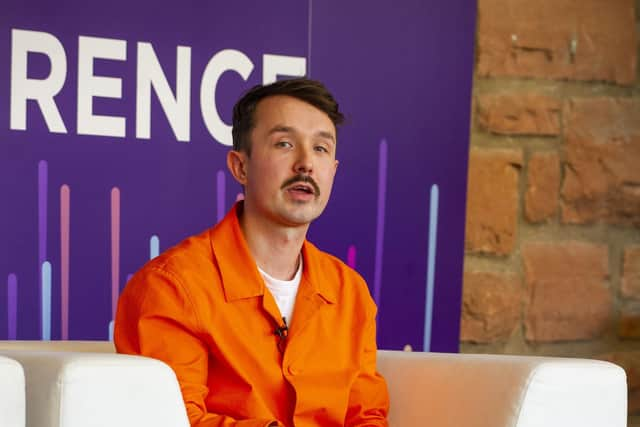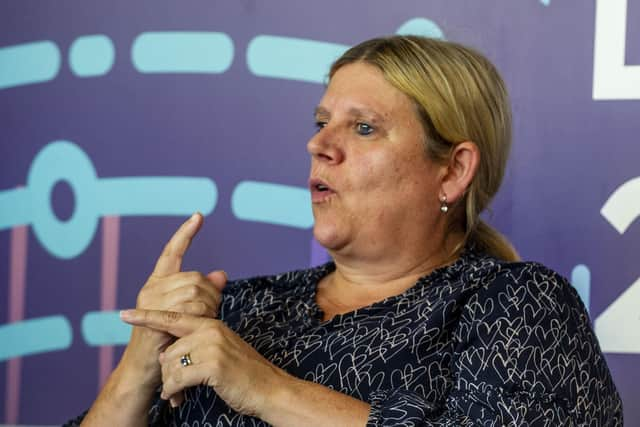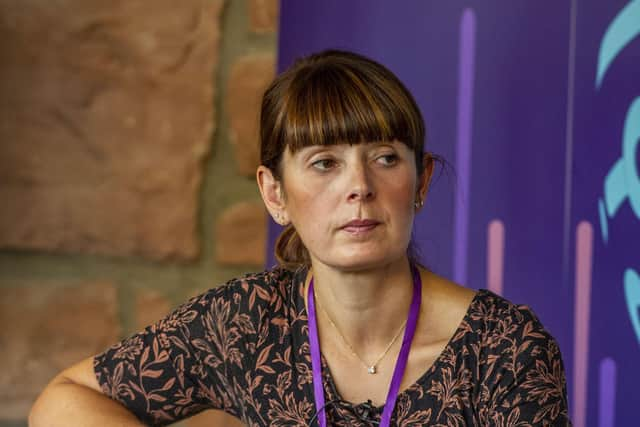Conference report: Heeding divergent figures
A discussion on skills looked at the challenge of creating a truly inclusive and diverse workforce, examining how to make the profession accessible and welcoming for deaf and neurodiverse people, and also discussing issues around sexuality.
Claire Gillespie, digital technologies skills manager for Skills Development Scotland (SDS), said: “We need lots of people with data and technology skills, but we don’t have enough people coming through the system.”
Advertisement
Hide AdAdvertisement
Hide Ad(DDI executive director Jarmo Eskelinen later said there was a shortfall of around 7,000 people needed in Scotland.)


Gillespie said it was not just about young people, and said it was important not to forget the older and current workforce.
She said diversity was “baked into everything SDS does”, and that neurodiversity was an important focus. She also praised the British Sign Language (BSL) data glossary project, funded by SDS and supported by the DDI initiative, which created some 500 new terms to make it easier for deaf people to access careers in data and the wider technology sector.
Audrey Cameron, manager of the BSL data glossary project, talked about her own experience as a deaf person, describing how she had to change career after doing a PhD in chemistry because she did not receive adequate support to communicate technical aspects of her work.
She said the deaf community had to go “cap in hand” for money to get a limited number of terms from different science disciplines incorporated into BSL – and that creating new signs for computer science was a challenge.


Before the BSL data glossary project, everything about data was signed as “data science”, while computer science was signed as a “computer” and then “science” – indicating beakers and test tubes, and implying something akin to exploding computer screens! Terms like machine learning were also very problematic, Cameron said.
“When the glossary project team got together, we could finally talk on the same level,” she continued, speaking to conference delegates via a BSL interpreter. “It’s so important to give deaf people access to data careers by creating these signs, and signing will need to keep evolving as technology terms evolve.”
Gillespie the decision for SDS to fund the project was a “no-brainer – a great example of the public sector universities and those facing career barriers coming together. It was astounding to me that this was still a challenge and a problem that had to be fixed.”
Advertisement
Hide AdAdvertisement
Hide AdNeurodiversity was another important focus for SDS, Gillespie explained, stressing that support for neurodiverse individuals had “positive knock-on benefits for wider individuals – such as clearer communication and holding pre-meetings”.


Kevin Guyan, a writer and researcher who published Queer Data: Using Gender, Sex and Sexuality Data for Action, said considerations of LGBTQ+ representation in the workforce had arrived later than the consideration of other characteristics.
He discussed some underlying challenges in handling LGBTQ+ data – and data generally.
“Data is rarely just sitting there, buried, waiting to be uncovered,” Guyan told the event. “It’s already political and historical before it comes to be interpreted.
“It’s not just about presenting data; in finding it, you are constructing the data you’re looking for.”
He also stressed there was no “one size fits all” approach to dealing with LGBTQ+ data globally, and said it was important to challenge the intrinsic value of collecting data – because “collecting more and more data about more and more things will not necessarily solve the problem”.
Guyan also said it was important to “think critically about the words we are using”, and to always ask: “What are we trying to achieve? Who are we trying to help?”
Jarmo Eskelinen highlighted this point in his summary of the day, saying: “Data collection shapes the data, therefore, we need to be conscious about why. What’s the impact of data? We don’t just hoard data for the sake of it.”
Advertisement
Hide AdAdvertisement
Hide AdLooking at data skills more broadly, he said it was about embedding data in an ongoing curriculum transformation programme at the University of Edinburgh.
He explained: “It’s the biggest exercise in 160 years to change the way we teach. We are embedding dataskills in every curriculum, so that we have cross-cutting themes, of which data is one. There will be others, like the climate crisis and inclusivity. No matter what you study here, you will get those skills.”
Tackling skills shortages was another key focus for the DDI initiative, he said: “We want to leave a legacy of data competencies in the university and at the regional level. If we have managed to address the bottleneck of about 7,000 people needed [in the data and technology workforce], we will be in a good position because that’s where the power is – the people will come to work in the sector in these projects and the new companies here. Then we can leave the motor to run.”
